The way we hold onto our bike becomes more of an issue when we ride several days in a row and for hours at a time. Being able to change position, especially the part of your hands you are resting on, and the angle of your back, and the distribution of weight between your hands and your bum, makes a big difference. Choosing the right touring bike handlebars for you is important but it is also subjective.
We all need to feel happy on our own bike. Vivente broadly divides handlebars into drop and flat/upright styles. But there is no right or wrong. Our hands become familiar with where everything is within a few days.
The impetus for the drop bar user to change position is sometimes to be lower, to have more power, more body control and less wind resistance. But the sit-up style bar rider cannot get as low, so thinks less in terms of speed.
Are Drop Bars the More Comfortable Touring Bike Handlebar?
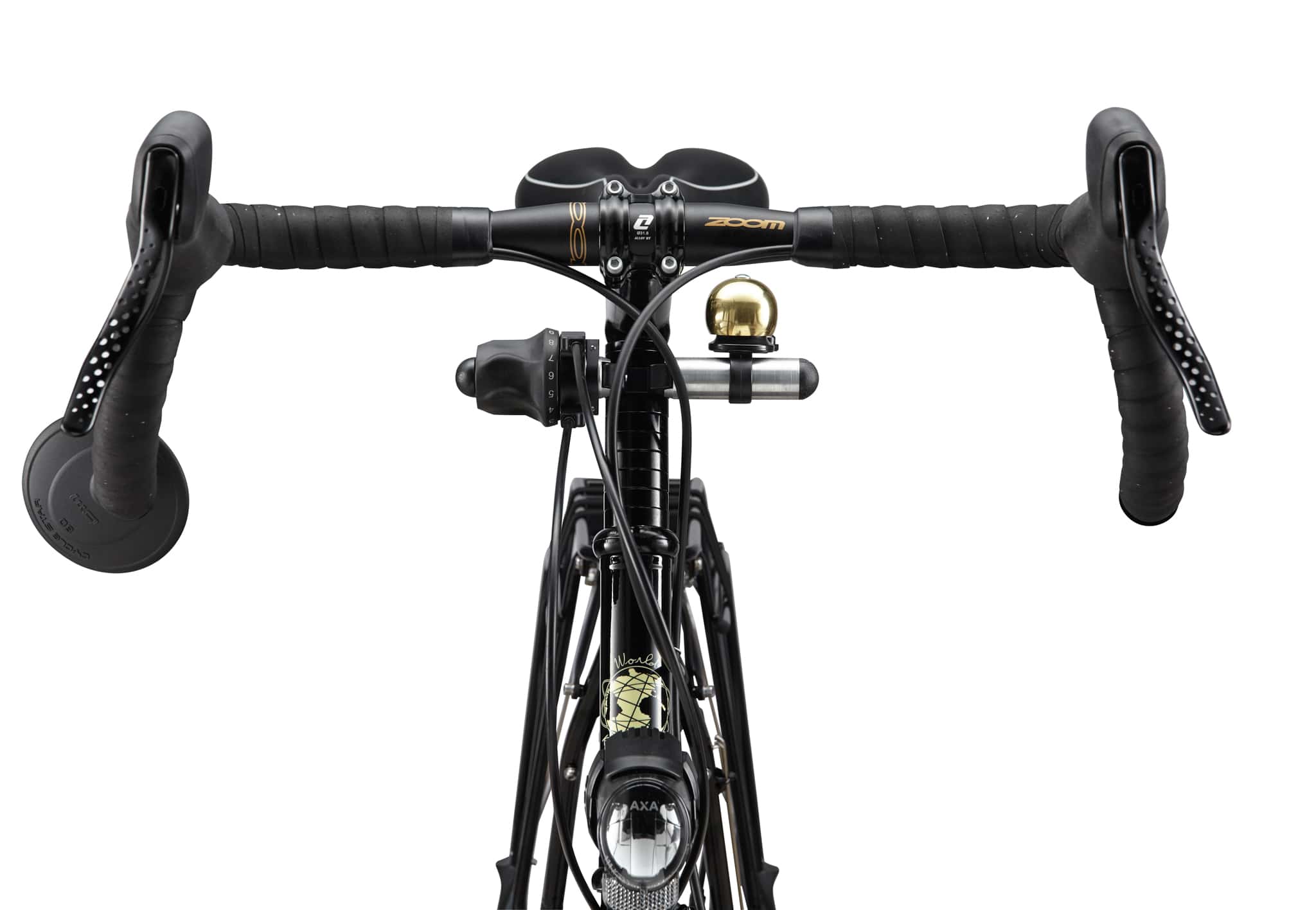
Drop bars were originally developed to get our bodies a little lower, or at least to give us the option of being lower. This would reduce wind resistance. But for touring bikes, that get ridden for long periods, they (drop bars) offer the added benefit of being able to change our back-angle. Some sit-up bars offer a reached-forward position so are not as different as they might at first look.
Are Drop Bars More Comfortable?
You can position your drop bars up high if you want, providing your forks have a long steerer tube. You still get the advantage of drop bars in being able to adjust your back-angle. Drop bars don’t necessarily mean very low riding positions, and they can be considered a comfortable option. It is still possible to get your body down low as you might like to do when going down hills fast, going through faster corners, in headwinds, or riding in traffic. The brake lever hoods also give you an extra place to put your hands giving you a stretched-out position option.
A unique thing about drop bars is the way you can pull against them in the drop position.
In the racing world, the preferred width of drop bars is the width of your shoulder joints. That’s related to optimizing lung capacity. With the advent of so-called “gravel” bikes, wider drop bars have become available. The lower (drops) section is flared out. Bore size (where the stem clamps the bar) has been standardised at 31.8mm (they used to be 25.4mm or 26.0mm) so as to prevent movement in rough terrain. These are also appealing for long distance touring.
The new designs with flared out drops, are about 6cm wider. They are very comfortable, and more steering leverage makes them seem “lighter”. They move the mirror in the handlebar end outwards and rear vision is better.
Flat or Upright Touring Handlebars
These postures might reduce strain on your neck and shoulders. There are several varieties and it’s best to make up sub-categories and show some good examples.
Riser bars
These are the traditional mountain bike style bars, offering some backsweep, and plenty of room for mounting gadgets and a handlebar bag. One stands out from the rest for its lightness and shock absorption qualities.
Baramind Riser Bars
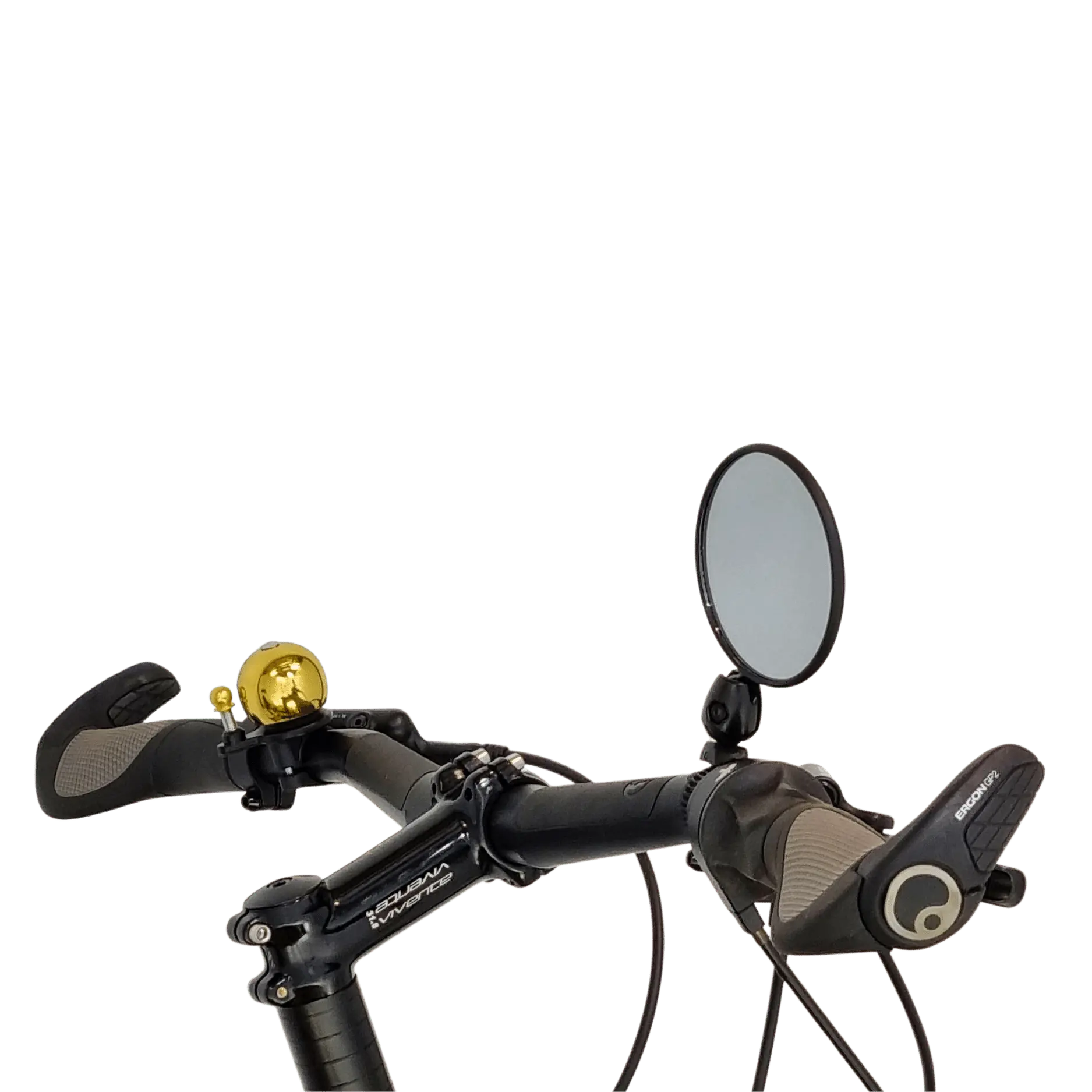
These new French-made handlebars use injected polymer mixture to manage vertical deformation. The bars flex downwards on impact but remain rigid when pulling up. They absorb shocks downward but lock upwards to maintain good control of the direction. The idea is to provide comfort when you need it and control when you need that.
Baramind makes a few models but the one suited to travel bikes is the BAM Trek. These have a 12° back sweep, are 660mm wide and weigh 350gms. (They are carbon fibre).
Lab and field tests were made using accelerometers placed on rider’s wrists, on the two ends of the handlebar and on the stem. These data were recorded to measure handlebars absorbing capacities.
This style of bar is best when matched with barends, such as from the Ergon brand.
Baramind handlebars were compared with regular handlebars from the market. Results show that Baramind significantly reduces vibrations transmissibility from handlebar to rider’s wrists. Thereby, muscle recovery of the upper limb is improved, and fatigue is reduced.
The normal Baramind bar is for riders 80kg and over and there is a soft version for riders under 80kg.
Although new, these bars have been widely adopted by high-end travel bike brands.
Trekking Bars
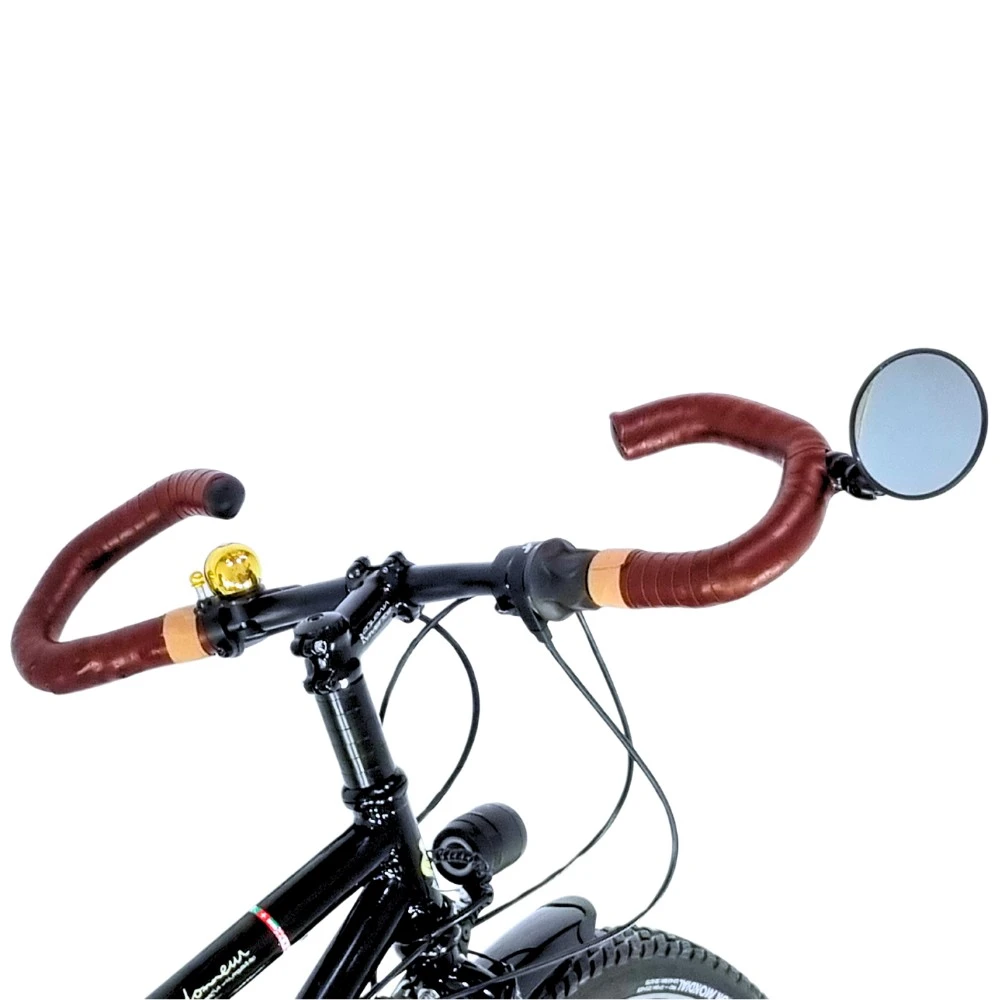
Trekking bars incorporate barends into their design, thereby allowing for lots of holding positions, including the chance to stretch right out. You might choose trekking bars if you often find you need to lean forward but you dislike drop bars. They can be easily rotated to get an even higher upright position.
Wider than drop bars, trekking bars offer more steering control.
Manufacturers usually fit these bars with foam grip but this does deteriorate over time. Wrapping leather tape over the foam is an excellent solution giving both comfort and durability.
There are a few trekking bar styles, but the best is the German Humpert which reaches forward.
Wide Swept-Back Bars
This is a broad category and includes some bars that have so much backsweep that you have to sit virtually straight up. We don’t want the bars coming back so far.
A solution has been to move the bars forward by welding them to a cross bar attached to the stem. This allows the grip position to be wide, for the backsweep to be limited, and for a comfortable 45-degree bar angle.
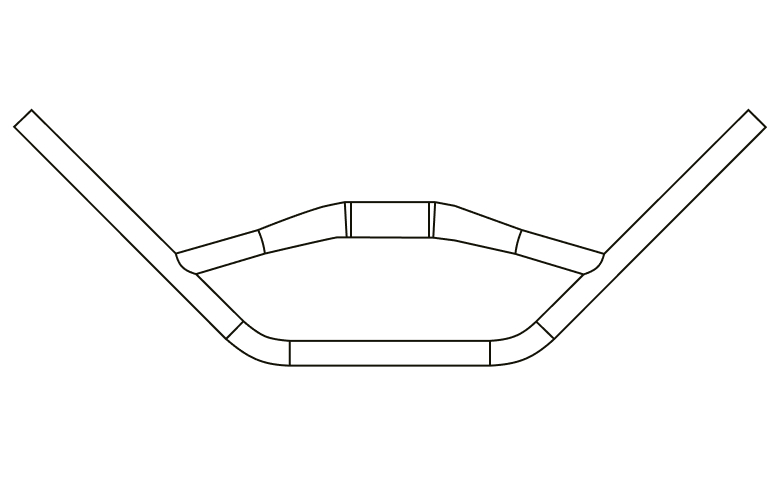
Barcoo Bars
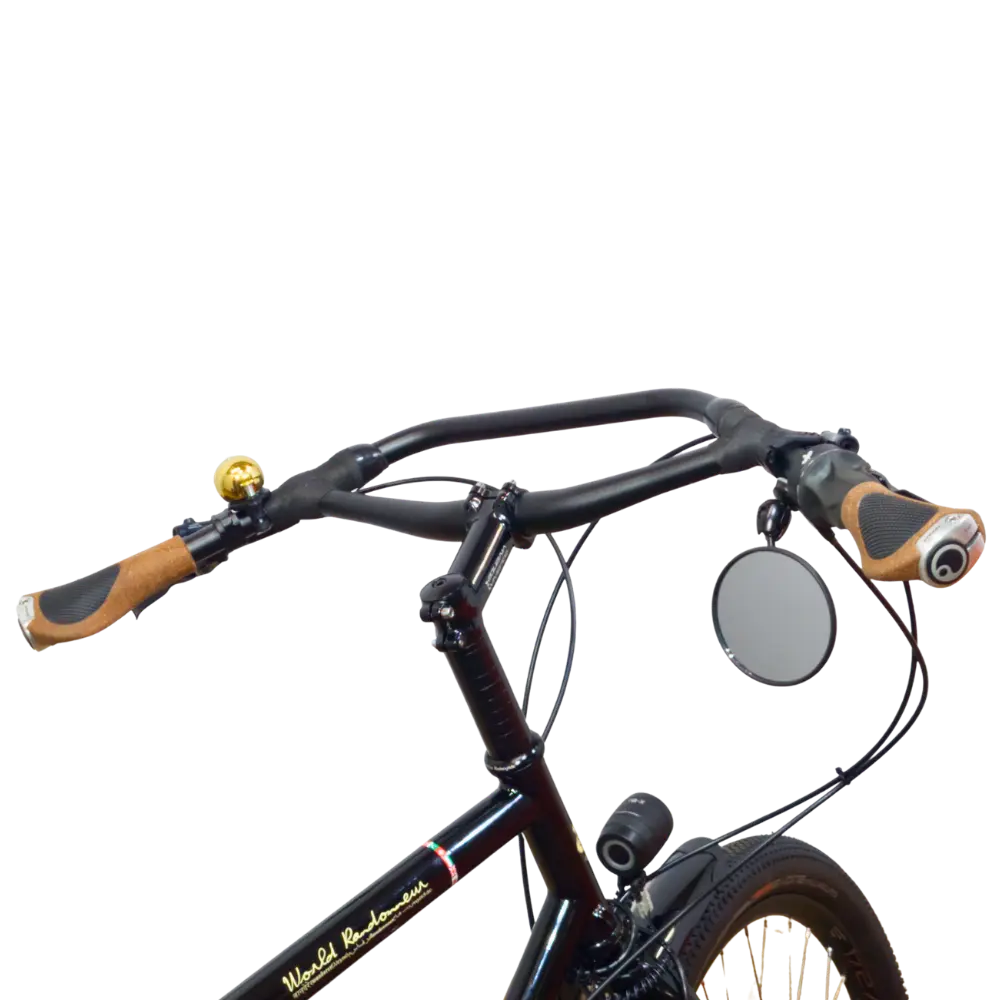
These wide, swept-back bars are made for better hand and body positions. Barcoo bars are best paired with Ergon GC1 grips that compensate for the swept-back angle giving better handling and more comfort. They offer a wide range of positions and mounting options. The width improves control and stability, even at higher speeds. They are noticeably less tiring on longer days.
Finally on handlebar choices, they don’t need to be forever. For drop bars, the brake levers are unique. But for the different sit-up style bars, the brake levers are the same. Bars can be changed. People rarely do change because we tend to get used to what we have.
 Australia
Australia New Zealand
New Zealand Other
Other